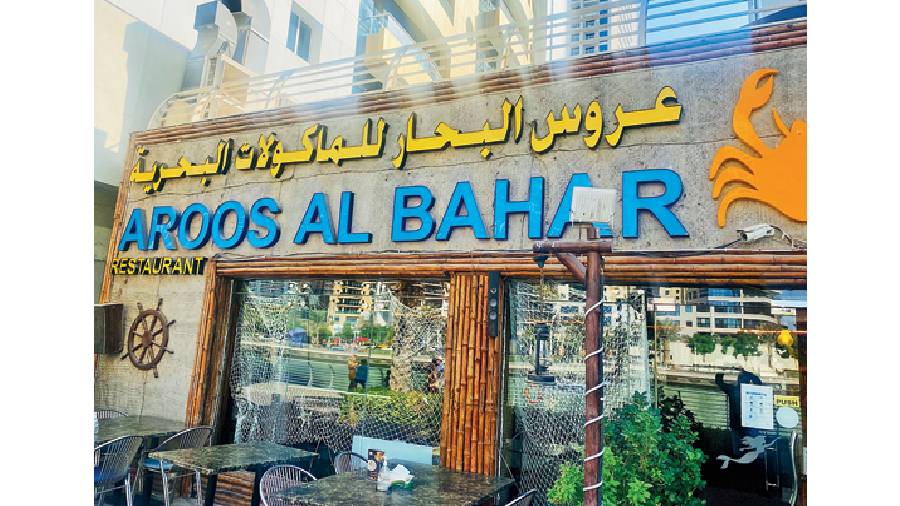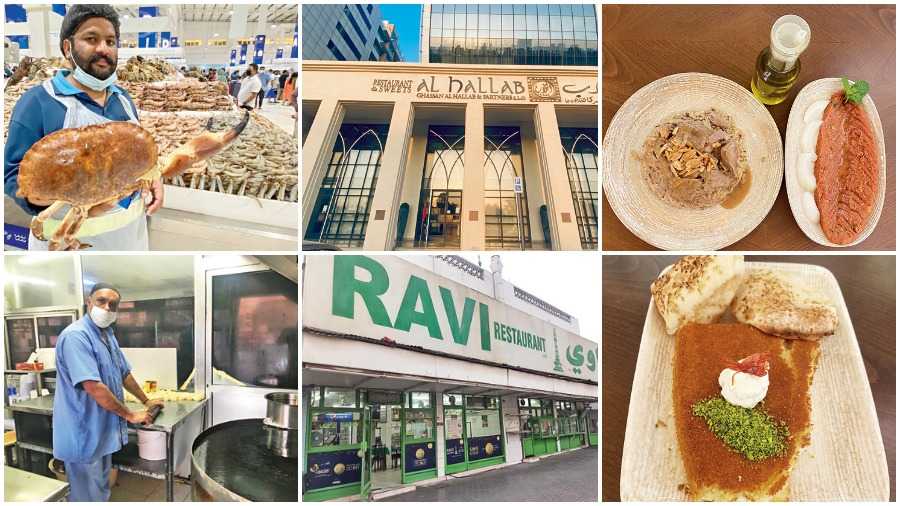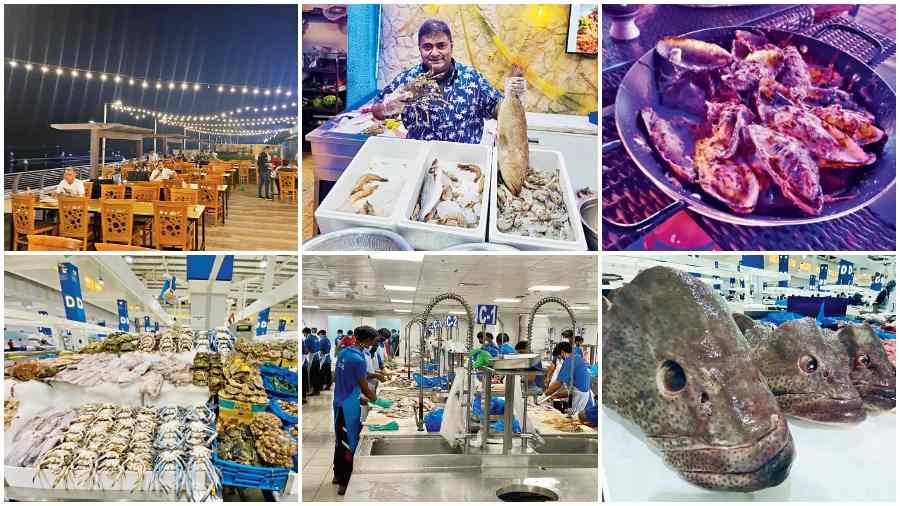From my early years, I always had a deep passion for food. Growing up sharing a wall with one of the oldest Chinese restaurants in Calcutta — Kim Wah, which closed in the late 90s — this was kind of inevitable. Little did I know then that I would later go on to be a restaurateur. Food doesn’t travel well. It bruises in transit or spoils en route. But the allure of food and the joy of a mealtime travel excellently. Whenever I am exploring exotic dining destinations, be it in India or abroad, the distance from home matters less, the distance to the dining table, more.
Half the pull of a mealtime is hunger, but the better half is the promise of a good story, memories to last a lifetime.
Having visited Dubai over a dozen times in the last decade, it was on my wish list to do a culinary trip to Dubai. This time, that was the charm. I zeroed in on on few restaurants which I didn’t want to give a miss.
On top of the list was the weekend brunch at Nobu, at the Atlantis. I had been reading about Chef Nobu’s creation of The Black Cod Miso and the Beef Foie Gras Gyoza. It exceeded my expectations. Foie gras is typically made of duck liver, but this was the first time I tasted beef foie gras. The combination of this Gyoza with the Black Cod Miso was heavenly.
Nigiri and sashimi were must-tries. Next to enter the list was the Wagyu Rib Eye Flambe and the Roasted Lobster Shiso Salsa.
The dessert platter was visually very appealing in its myriad colours. Apart from the weekend brunch, the restaurant also boasts of its very own Omakase (individual signature multicourse tasting) menu, which I have kept in my list for my next visit.
Ravi is an age-old modest Pakistani restaurant which has a couple of outlets in Dubai — the original branch at Satwa and the more recent outlet at Karama. We, as Indians, are deprived of the opportunity to travel to Pakistan in search of food. The only available alternative to us are the Pakistani restaurants of Dubai.
Ravi is not fancy and focuses on its food. It is rather uncomfortable with its narrow spaces but is still a restaurant I visit every time I am there. The classic breakfast at Ravi with Brain Nihari, Haleem with Keema Paratha is to die for.
The Haleem here is drastically different from the ones which we get back home and is very thick. For lunch or dinner, one cannot go wrong with Mutton Peshawari and Mutton Handi with a Roghani Naan. Ravi opens as early as 5am for breakfast and, to my surprise, the restaurant was brimming with customers at 6.15am on a Saturday morning.

Though not on my list we explored a new Egyptian restaurant, Aroos Al Bahar, at Fujeirah. Fujeirah is quite the beachside destination. As we were taking a stroll in the evening, we explored this standalone outdoor-seating restaurant opposite the Le Meridien hotel.
The grilled seafood marinated with Egyptian herbs is mouth-watering. The charcoal-grilled squid eggs were one of the most exotic dishes on the menu. In fact, squid eggs as a dish are hard to find anywhere else in the world. It complemented well with baked oysters and spiced fillets of the hamour fish, which can surely be the first cousin to Calcutta bekti.
Because of the heavy influx of South Indian population in Dubai, there are innumerable eateries showcasing the best from the four southern states of India —Andhra Pradesh, Kerala, Karnataka and Tamil Nadu. The four cuisines have much in common and differ primarily on the spiciness of the food, out of which the Andhra cuisine is the spiciest of all.
Two of the best restaurants which are must-tries are the Dindigul Thalappakatti and Calicut Paragon at Karama. Today Thalappakatti is present in eight countries including USA, France and Singapore. The Dindigul Thalappakatti Boneless Mutton Biryani is a complete departure from our Awadhi version. The short grain rice — Sreeraga Chamba — used in this biryani stands apart from others and melts in the mouth, the rice having a distinct similarity with Gobindobhog rice from West Bengal.

(Clockwise from top) Egyptian Restaurant Aroos Al Bahar; a giant crab on sale at the waterfront market; Al Hallab, the Lebanese eatery that serves great Kibbeh Nayyeh and the dessert Khunafa; Ravi is a popular Pakistani place; and the chef at work in Ravi
The Mutton Pepper Roast, Chicken Sukka, Mutton Nalli Chops are great starters which have a distinct character.
The other meal at Calicut Paragon took me to a gastronomical paradise. They offer Malabar cuisine of exceptional quality and waiting for half an hour to enter this restaurant is quite normal during a weekend lunch.
The Crab Fried Masala, King Fish Pollichathu accompanied with tiny coin parathas and appam tasted great. I wanted to go back there for another meal the next day, however the restaurant was choc-a-block for Diwali festivities.
A trip without a Lebanese meal in Dubai is incomplete and a visit to the Al Hallab was a must. We ordered hummus with pine nuts and meat as starters followed by Kibbeh Nayyeh. Kibbeh Nayyeh is the Lebanese counterpart to sashimi and is raw minced lamb meat marinated with spices served in olive oil and pita bread.
Kibbeh Nayyeh is considered the national dish of Syria, though its popularity stems from Lebanon. Having Kibbeh Nayyeh for lunch was worth every dirham. Finally, a traditional dessert was served — Khunafa, made with spun pastry, soaked in sugar-based syrup, layered with cheese and sprinkles of pistachio and almonds. The range of baklava being sold at this restaurant needs special mention.
The new waterfront fish market in Dubai close to the gold souk at Deira is an absolute visual treat for foodies. It rivalled my visit to the Tsukiji market in Tokyo, which is supposed to be the largest fish market in the world and is famous for the early morning auctions of tuna and salmon.
The original fish market which opened in 1958 underwent a major upgrade and this state-of-the-art highly impressive fish market opened its doors in 2018. It now boasts polished floors, escalators, and central air-conditioning and looks more like a convention centre than a fish market. While most of the stalls here sell fresh fish and seafood, there is also a small section offering meat, vegetables, and dry fruits.
Stringent hygiene regulations are followed in this market with each of the traders wearing designated uniforms and the stalls are clearly marked with the name of the trader. Within the fish market there is a separate section where customers can cut their fish and get it cleaned.
I went there on a Thursday night, which is the starting of their weekend and I was mesmerised to see the volume of marine life displayed. This is the place that has the biggest pile of seafood I have ever seen.
As I wandered through the aisles, I could see the day’s fresh catch being cleaned and prepared. I was taken aback by the sight of a giant sea crab weighing 7kg. The most interesting part of the fish market are the food stalls, where I got my fresh fish and seafood cooked. The grilled whole tuna and whole Sultan Ebrahim with steamed lemon garlic clams and mussels was perfectly cooked and served by the side of the creek.
You can’t leave Dubai without experiencing the vibrant sights, sounds and smells of the traditional souks, which really bring the city to life.
Shiladitya Chaudhury, an avid traveller, is a communication consultant and a restaurateur with brands like Oudh 1590 and Chapter 2
